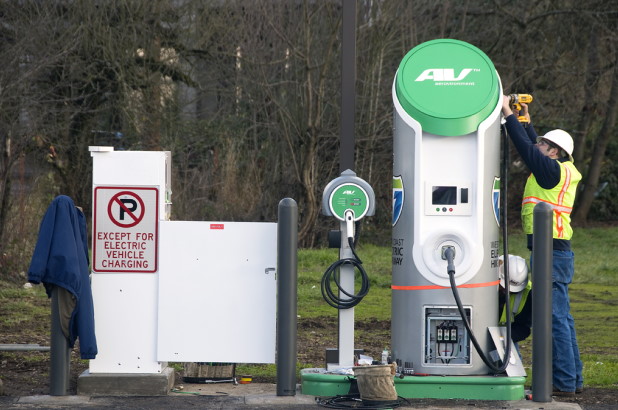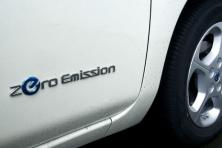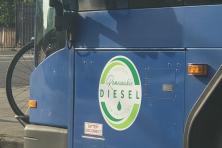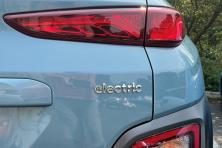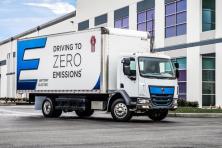After last fall’s record-setting wildfires and smoke and the ongoing COVID pandemic, Oregonians aren’t taking clean air and healthy lungs for granted. Ensuring that the future of Oregon’s transportation is electric—not burning fossil fuels—is critical for cleaning up our air and for achieving our state’s climate goals. Thankfully, with forward momentum in Salem, Oregon legislators are making clear that accelerating our transition to zero emission vehicles (ZEV) is a priority this session.
Promising steps by the Oregon State Legislature
Just yesterday, a package of ZEV-related bills cleared their first hurdle, gaining the votes to proceed out of the House Energy & Environment policy committee. These include two of Climate Solution’s priority bills:
-
HB 2165: This bill does three important things. It extends state incentives for purchase or lease of electric vehicles that are poised to sunset. It also expands the Charge Ahead Electric Vehicle Rebate Program for low- and moderate-income residents. The bill also requires utilities to invest a minimum of 0.25% of monthly meter charges in Electric Vehicle (EV) infrastructure and programs, while devoting at least half the funds to underserved communities that support:
-
The use of EVs by residents of rental or apartment housing and those living in EV “charging deserts”
-
The use of EVs by Black, Indigenous and People of Color communities, low-income communities, tribal communities, rural communities and other communities adversely harmed by environmental and health hazards
-
The deployment of electric school buses and transit buses
-
-
HB 2180: This bill requires new construction to be built “Electric Vehicle-ready”, so buildings are ready to cost-effectively install charging stations in the future.
Back in 2019, the Legislature passed Senate Bill 1044, which established a statutory goal of getting 50,000 electric vehicles on Oregon’s roads by the year 2020. Oregon fell short of meeting this goal (the state currently has 31,977 EVs), but this doesn't mean we can call it quits. Oregon still has two other ZEV adoption targets, and they are quickly approaching: 250,000 EVs by 2025 and having 90% of new vehicle sales be EVs by 2035. Now is the time to re-strategize and shift into high gear, so we can meet these necessary targets.
Here are the three areas where Oregon needs to step up its ZEV game:
-
Affordability: Ensure that low- and moderate- income households are able to receive rebates that make the total cost of new and used EVs competitive with their conventional gas-powered counterparts;
-
Awareness: Outreach and education campaigns are conducted in a manner that reaches everyone (taking into account socioeconomic barriers, cultural differences, language barriers and urban and rural barriers to adoption) especially in underserved communities and;
-
Accessibility: Public ZEV charging infrastructure is widely available, accessible, and affordable—ensuring that transportation electrification solutions meet the needs of all communities—with special attention to underserved communities who have been left out of the EV conversation and transition.
Strategy 1: Affordability
ZEVs have been growing in popularity, especially among folks who can easily make the switch; single family home-owners, and folks with more disposable income and the wealthy. In order to meet our ambitious EV goals, we need to ensure that ZEVs are affordable to everyone who is interested in making the switch—including low-income folks and folks who live in apartment buildings.
While EVs have lower fuel and maintenance costs, they typically have higher upfront costs than gas vehicles. This can make EVs unaffordable for many Oregonians. A recent UCLA study has shown that offering rebates for the purchase of hybrids, plug-in hybrid electric vehicles, and battery electric vehicles has the greatest positive effect on purchase rates among low- and moderate-income customers.
HB 2165 helps address this issue by increasing the Charge Ahead Rebate (the current income-qualifying state rebate for EVs) from $2,500 to a maximum of $5,000, depending on an applicant’s income level. This Charge Ahead Rebate can be used for new or used EVs, the latter of which are becoming more plentiful and affordable in the market.
Strategy 2: Awareness
Ask around and I’m sure you’ll find many people who are unaware of Oregon’s existing EV rebates. We need to double down on the outreach and education component of the EV rebate program to help raise its public profile. Most people consider information gained from people they know to be the most trustworthy. Accordingly, it’s important that outreach and education is done at the community level throughout Oregon so that unique questions, challenges, and barriers are addressed. Not only does Oregon need to invest in this effort across the state (especially in the areas with the lowest EV adoption rates), but we also must invest in outreach and education campaigns that are culturally-specific and available in the variety of languages spoken across our state. If we do not expand our outreach and education efforts, we will not meet our 2025 or 2035 ZEV adoption goals.
HB 2165 addresses this need by allowing the Charge Ahead program to spend more money on crucial education and outreach efforts, including but not limited to, partnering with community-based organizations.
Strategy 3: Accessibility
Let’s say you are someone who 1) owns a 2) single-family home with a 3) private driveway or garage. If you happen to have all three of these key components, switching to an electric vehicle and installing charging equipment is relatively simple. Now imagine that you don’t have all three components described above; you are a renter (not able to modify your home’s electrical components), and/or live in an apartment complex (don’t have access to a private garage or driveway to install charging infrastructure in), or other possibilities that don’t present an easy path to setting up residential EV charging. We need to invest a lot more in accessible public charging infrastructure to overcome this barrier to EV adoption. While EV industry experts talk about charging stations and purchasing an EV as a “chicken and egg paradox”, individuals who don’t have control over private, at-home, charging stations know this is a false dichotomy.
What we need are major investments in EV charging infrastructure that are both accessible and affordable. The Oregon Department of Transportation is poised to submit their “Transportation Electrification Needs Analysis” to the Governor’s office this summer, outlining our state’s infrastructure needs to accelerate ZEV adoption. Currently there are too few charging stations or zero EV charging stations in many lower-income, rural, and predominantly Black, Indigenous, and People of Color communities across the state. This needs to change. We need state and local governments, utilities, and private automakers to invest funds to ramp up the availability of charging infrastructure, so folks are able to purchase EVs with confidence, knowing that they will have a place to charge their vehicle.
HB 2165 will address a portion of this EV charging gap by requiring utilities to invest in transportation electrification infrastructure (half of those funds would be spent in underserved communities) that could address affordability and accessibility issues facing EV owners who rely on public charging options. The truth is that a lot more investment is needed, and quick. As auto manufacturers commit to ZEV goals of their own, public-private partnerships led by these companies that invest in charging infrastructure—particularly in underserved communities—could be a game changer.
HB 2180 would also help ensure that new construction is built ready to handle the installation of charging infrastructure, avoiding costly retrofits later on.
We are hopeful that this package of ZEV-related bills will pass this legislative session, and in doing so, improve our chances at meeting our ZEV goals. However, we have a lot more work to do in this area, and a relatively short amount of time to make it happen. Federal and state investments are urgently needed to bolster the affordability, accessibility, and awareness of ZEVs to ensure that EVERYONE who relies on a personal vehicle can make the transition to an electric vehicle, regardless of their demographic or socioeconomic background.
